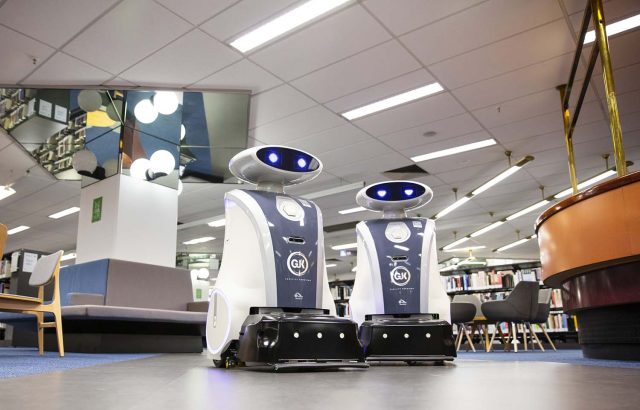Welcome to the era of Artificial Intelligence.

Discover the future of commercial cleaning with insights from industry experts.
Welcome to the era of Artificial Intelligence. With the introduction of ChatGPT, our world has been thrust into an uproar rarely seen before. Companies are striving to harness the power of AI and incorporate it into their processes and trying to figure out ways to make the most of this emerging technology. The AI industry is growing in leaps and bounds, and it’s exciting to see what it has in store for us in the future.
What does all of this mean for the commercial cleaning industry? Contrary to popular belief, the use of AI in commercial cleaning has been around well before ChatGPT became a buzzword. It was the COVID-19 pandemic that triggered developments in this industry, allowing for more innovative and progressive technologies to emerge. The need for increased cleaning, social distancing, air purification and transparency motivated commercial cleaning companies like GJK Facility Services to accelerate the adoption of robotics and IoT to enhance the services offered to clients,
So what is the future of the commercial cleaning industry in light of the recent advancements in technology? We take a look at some insights from our industry experts in this blog:
AI as a Supplement, Rather than a Replacement of Humans
Although many are concerned that robots may take the place of humans in the near future, resulting in loss of jobs and professional uncertainty, the stark reality is that it is more likely that robots will be working together with humans for service delivery rather than replacing them. At the moment, robots are mainly limited to cleaning, scrubbing, mopping and waxing floors, leaving humans to complete tasks that require more dexterity.
Our cleaners are constantly learning how to incorporate technology into their everyday work, which can help make their own jobs easier by taking on repetitive, monotonous tasks for better efficiency. These robots are trained to work along a mapped path, which limits their range and autonomy. Although useful, robots are some way off from completely replacing the human touch in the cleaning industry.
That being said, we will still likely require the human element to work alongside technology. A robot cannot work outside of its mapped area and cannot look over an area and determine if it needs a superficial or deep clean. All robots need to be programmed by a human, which is why there is no reason to worry about imminent job threats in the cleaning industry because of AI.
The Internet of Things (IoT)
The Internet of Things (IoT) is another technology that is likely to be developed even further in future. At present, it can help commercial cleaning companies and business owners track data that could provide invaluable insights into operational excellence and efficiency. These might include tracking the footfall of a targeted area, introducing sensors that monitor the air quality of a room or understanding when a space needs cleaning or when dispensers need to be refilled. They can also help prevent waste bins from overfilling, notifying relevant stakeholders when they need to be emptied. This data allows cleaning companies to be proactive rather than reactive to the cleaning needs of a building.
Although IoT is being extensively used in the cleaning industry today, its adoption has been slow. This will likely change in the future, with more and more cleaning companies and facility managers realising the need for more strategic oversight of the cleaning process. Prices of IoT devices will likely fall as it becomes more common, sensors will become better, devices will have better network connectivity, and productivity will be higher in the near future.
The Future of Commercial Cleaning
It is estimated that the commercial cleaning industry will generate a revenue of USD 555.44Bn by 2030.1 During the pandemic, the importance of commercial cleaning services was truly felt, and the public’s opinion of cleanliness was forever changed. This trend is likely to continue, with more and more businesses focusing on the appearance and hygiene of their customer-facing front.
We are likely to see an increased interest in green cleaning practices. As one of the first carbon-neutral cleaning companies, we are experiencing firsthand the importance today’s businesses are paying on ensuring any business they partner with is dedicated to reducing carbon emissions. GJK has already adopted the use of chemical-free cleaning solutions, such as Z-water, and are actively engaging other partners on this front.
In future, more and more commercial cleaning companies are likely to seek ways to reduce their carbon impact, introduce automation and the IoT into their processes and move towards green cleaning practices. The growth in the commercial office cleaning industry has only just begun, and we’re just as excited as anyone to see where it could lead us.
References



